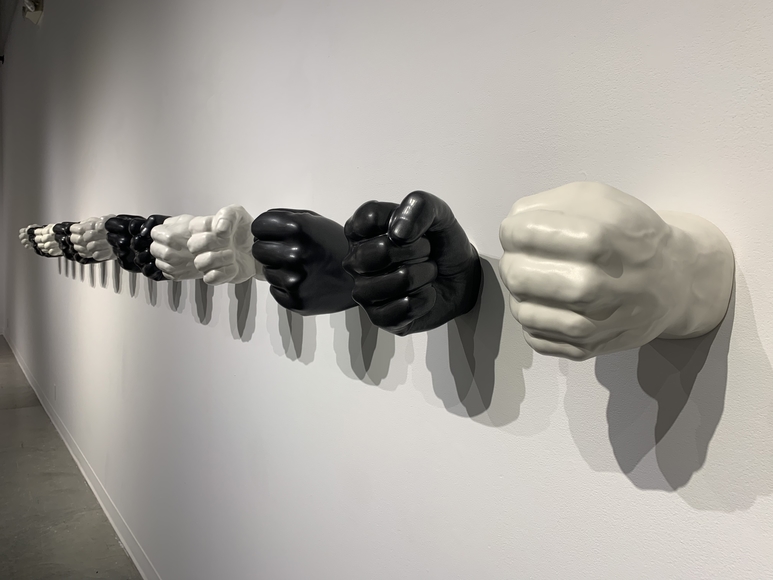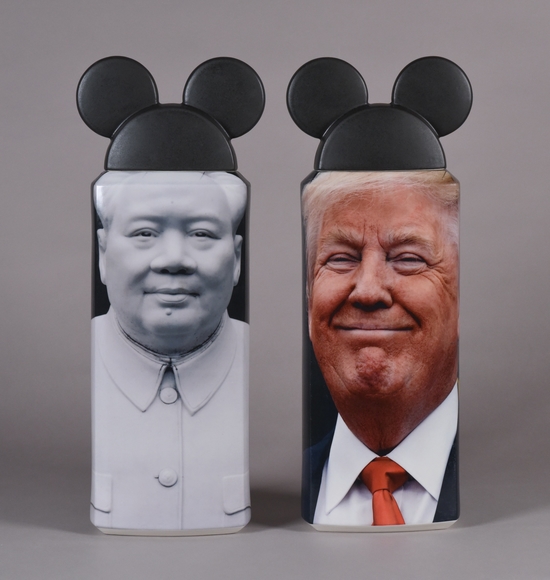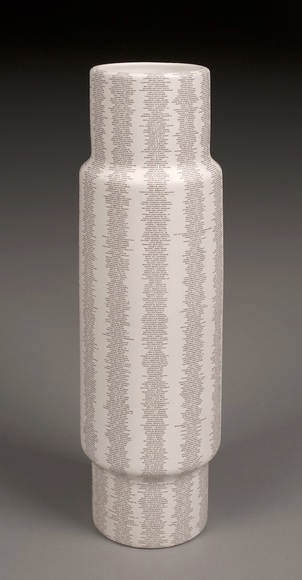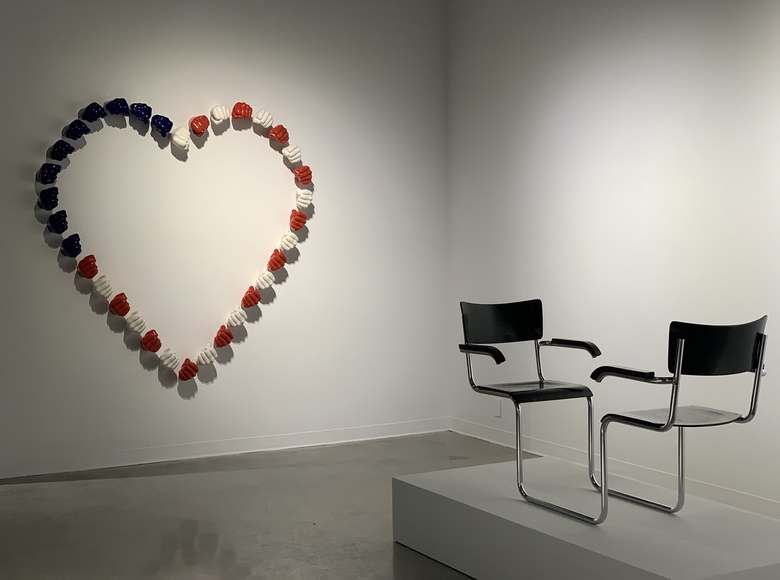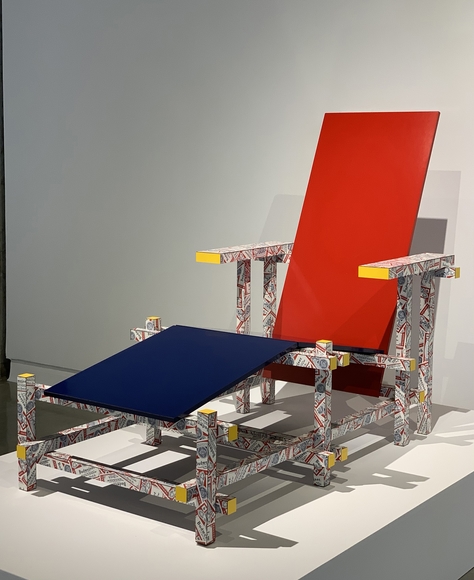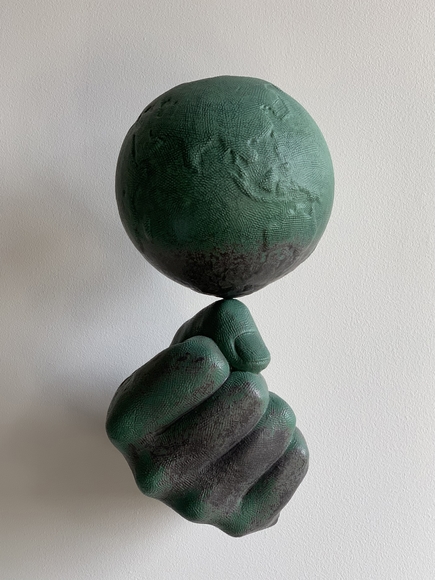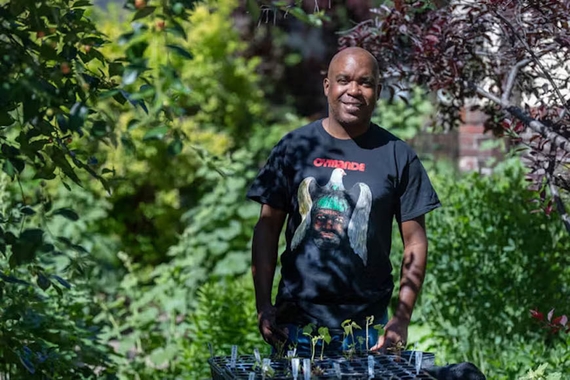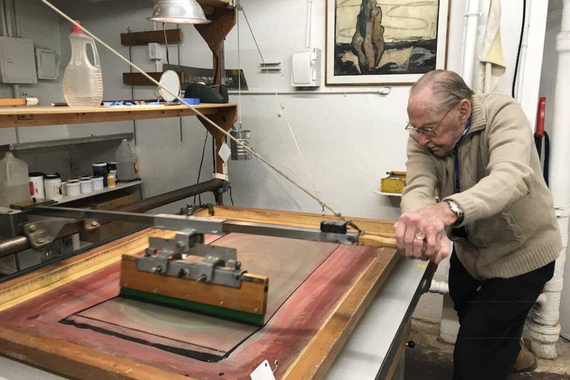A Question of Utopias
“I think of the vessel as the first canvas,” says Associate Professor Tom Lane. “You could say that the cave wall was the first canvas, but in terms of more developed cultures, the vessel is where images were first found.”
And Lane’s retrospective exhibition, Reverent and Irreverent Objects, is full of these vessels. Most obviously, there are his elegant ceramic urns, vases, and amphorae, expertly constructed and adorned with a variety of collaged photographic overglaze transfers. But there’s also a sense of the vessel to be found in his sculptures as well: in the pregnant emptiness of his satirical chairs. Or in the open-ended absurdity of his ticking, timeless clocks. Even in the tightly clenched palms of his wall-mounted fists.
After 44 years as an artist and an educator, you might expect Lane to be offering assertions and declarations, but instead, he’s asking questions. The work in this show holds space for wonder and for mystery and invites you to reflect on who holds power in our society: in racial and electoral politics, in the workplace, in the museum. What does it mean when a mighty bridge collapses right under us? How can a list of names encompass the breadth of a tragedy? And why, oh why, does so much power end up in the hands of so many idiots?
The work is, in turns, elegiac and electric, and the show draws you in initially with Lane’s hilariously acid satire. He holds a big ceramic cigarette up to the balloon of demagogues, dictators, corporate icons, and art history alike. “Any kind of utopian model,” he says, “whether it’s the de Stijl movement or Jesus Christ or Mickey Mouse, they’re all the same to me in a sense.”
Whether he’s skewering Donald Trump, Colonel Sanders, or Piet Mondrian, Lane’s pieces remain sober in their slapstick, grounded by a reserved sensibility and a devotion to craft. And like a vessel themselves, each piece’s simplicity hides inside of it hours, even years of process, both old and new — clay sculpting, 3-D printing, enamel decal transfers, slipcasting, hand-painted glazes — reaching backwards and forwards in time to situate one artist’s studio practice within the continuum of history. The work, however, remains playful instead of pedantic. “The creative process is so interesting,” he says. "It’s like going into a restaurant and putting in an order, and then you see what comes out of the kitchen. All artists operate within a very specific territory of influence, with a specific set of tools, whether a brush, a potter’s wheel, or a computer. They have a desire for a visual possibility, and after a timeless moment, the desire is fulfilled in their mind’s eye. Accessing this field of all possibilities inside ourselves is the most fulfilling and important experience I know.”
In the show’s quieter moments, we are left again to reckon with power. Side by side, printed onto separate vases, are Nelson Mandela’s love letters from prison and a list of those killed on 9/11. Part of a larger series, they stand equal in scale, and we are left to wonder if love and terror stand equal in impact. As Lane puts it, looking around the gallery, “There’s poetic narrative going on all over the place in here.”
Nearby, one office chair hovers precariously above another, an improbable power imbalance merged into a singular sculpture by their shared chrome frame. Next to that, two dozen oversized fists, alternating jet black and ivory white, form a line — not raised in defiance but held tight against the wall, tense with potential energy. Another group of fists wear the red, white, and blue of the American flag, starless and installed in the shape of a heart. This country is no utopia, by any stretch, but Lane does not seem to be condemning us either. A veteran of both the Vietnam War and the protests against it, this artist looks with nuance beyond just black and white and red and blue.
One ceramic fist, expertly glazed to read as cast bronze, balances the whole world atop its thumb, a precarious mirror perhaps for our contemporary anxieties. “It’s like Brancusi: action and repose,” he says, citing the Modernist sculptor famous for his abstracted obelisks. “This tension of something balancing: defying gravity, defying time.”
Here the 44 years of one man’s career intersect and overlap with both the last 200 centuries of ceramics practice and the last five of political history on this continent. These are vessels filled with humor, grief, labor, and love, artifacts of our time that are open to the questions to come.
Reverent and Irreverent Objects was on view from January 18 through March 19, 2022.
Location
The Katherine E. Nash Gallery is operated by the Department of Art at the University of Minnesota. It is located in the Regis Center for Art (East Building), 405 21st Ave. S., Minneapolis, Minnesota, 55455. Gallery: 612/624-7530. Department of Art: 612/625-8096.
Gallery Hours
The Gallery is open to University faculty, staff, and students as well as the entire community. Gallery hours are: Tuesdays and Fridays, 11 am - 5 pm; Wednesdays and Thursdays, 11 am - 7 pm; Saturdays, 11 am - 3 pm. The Gallery is closed on Sundays and Mondays. The Gallery will be closed for Spring Break, the week of March 8 - 12.
Covid-19 Access Policy
The entry doors at the Regis Center for Art building are locked. University of Minnesota faculty, staff, and students may enter the building with their UCard. Members of the public should come to the main entry doors of the East Building at 405 21st Ave. S. and call the Gallery at 612/624-7530. The Gallery Attendant will let them inside. All visitors to the Regis Center for Art must wear a mask while inside the building.
Parking
The Gallery is accessible via Metro Transit's Blue Line, Green Line, and bus routes 2 and 7. Parking is available nearby on the street, at the 21st Avenue South ramp, 5th Street South lot, and 19th Avenue South ramp; hourly or event rates apply.
